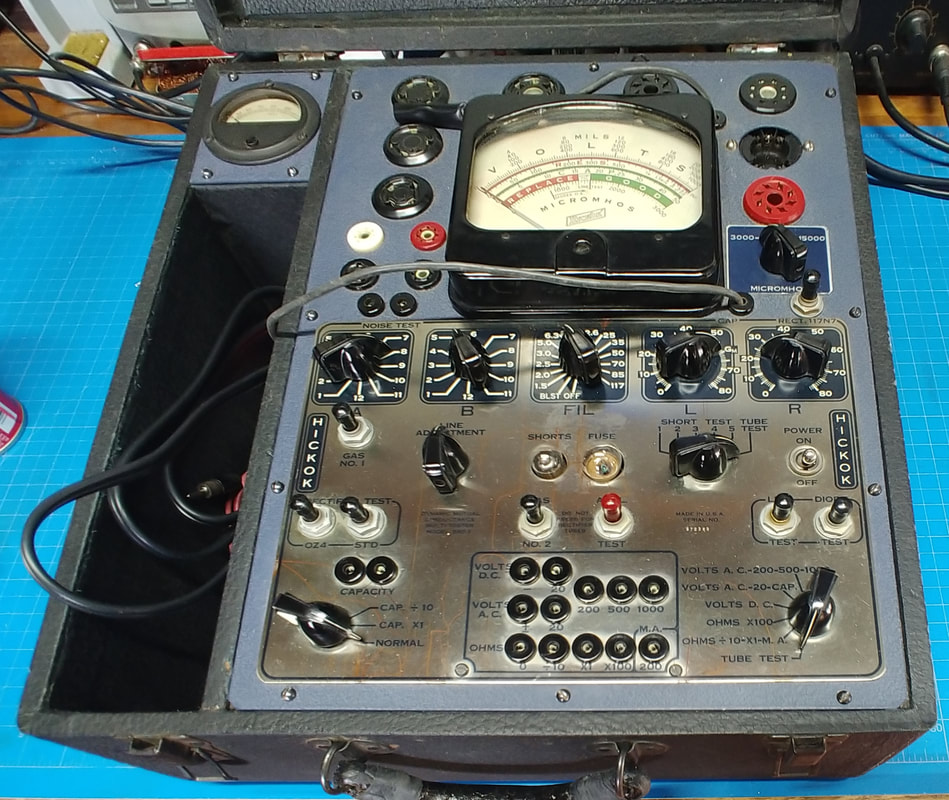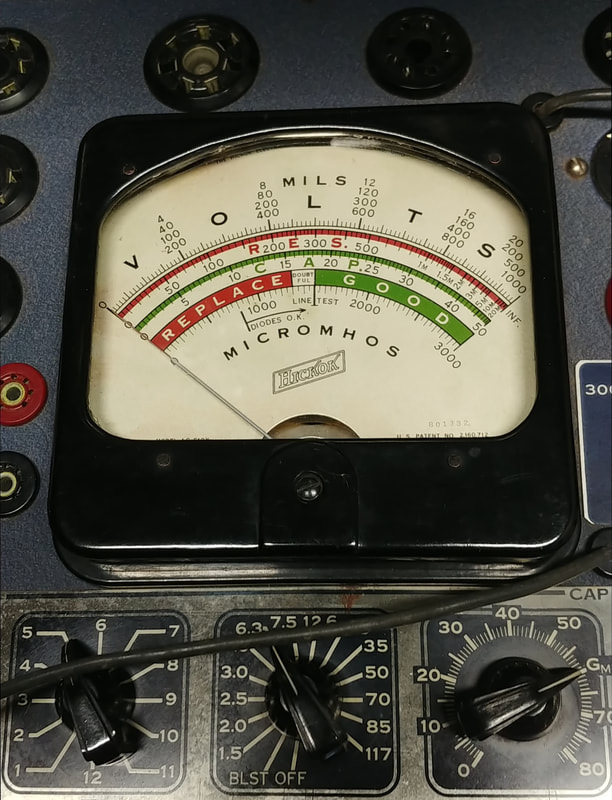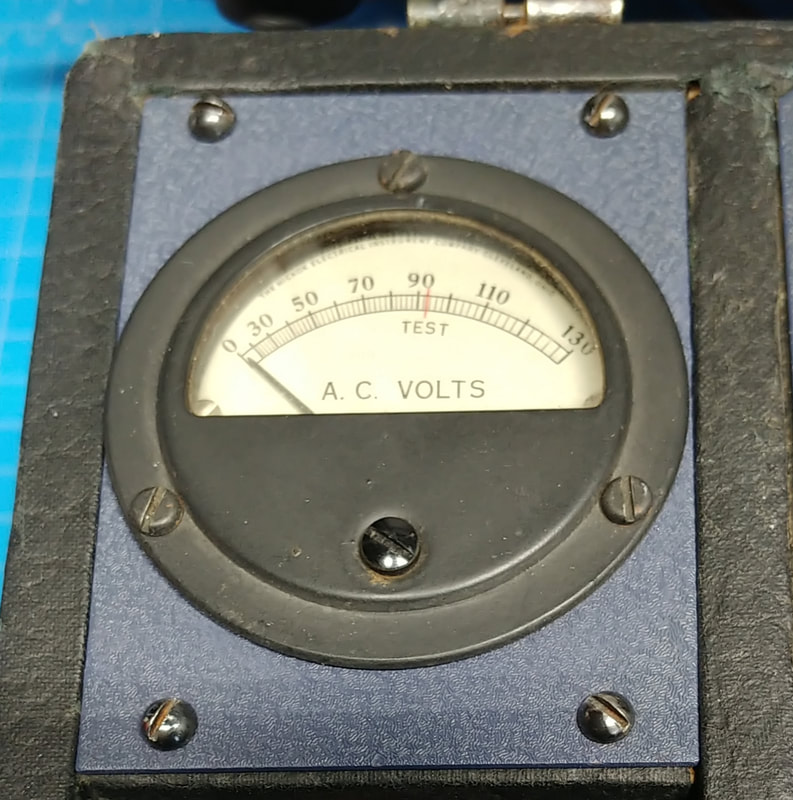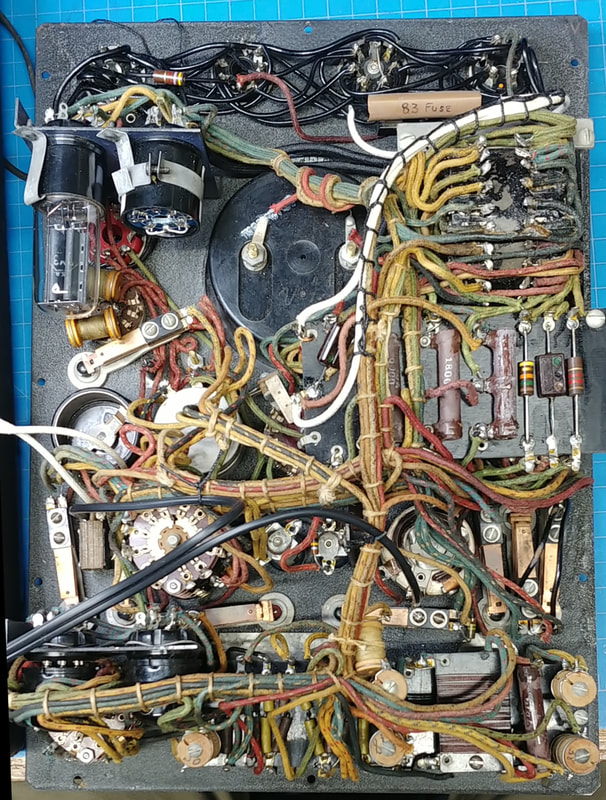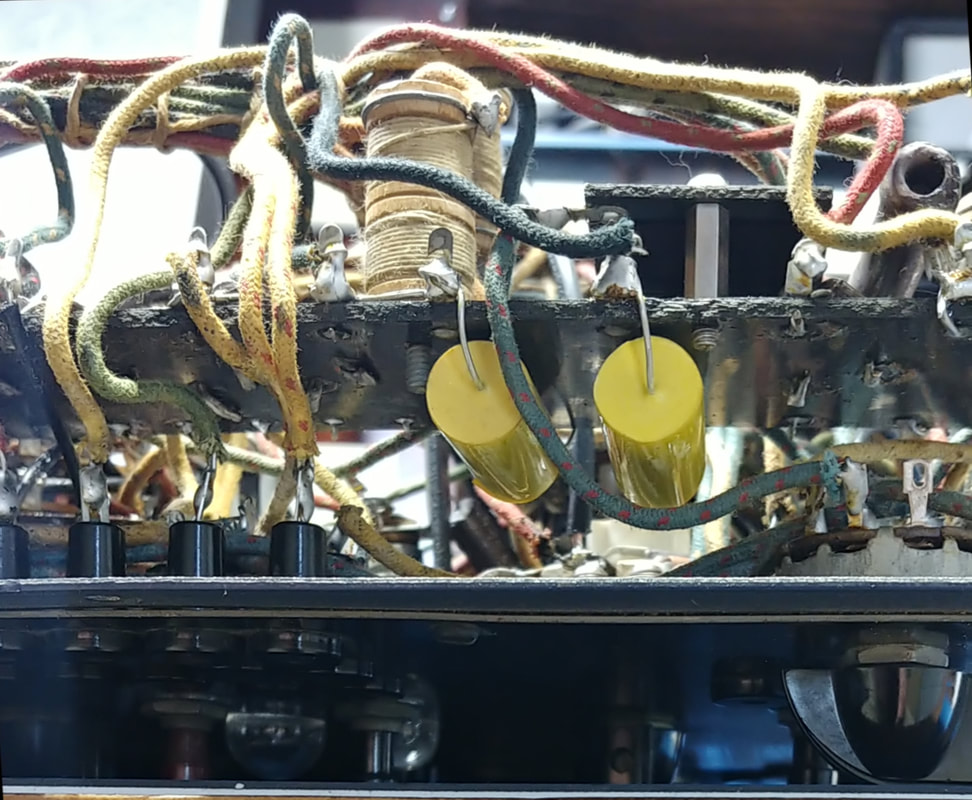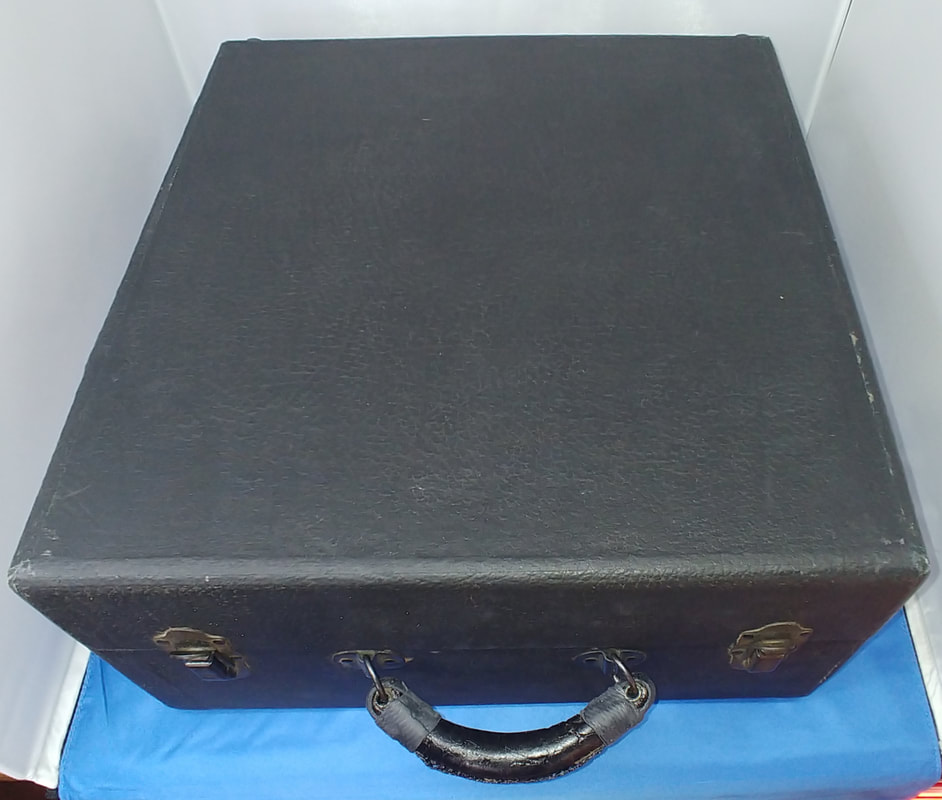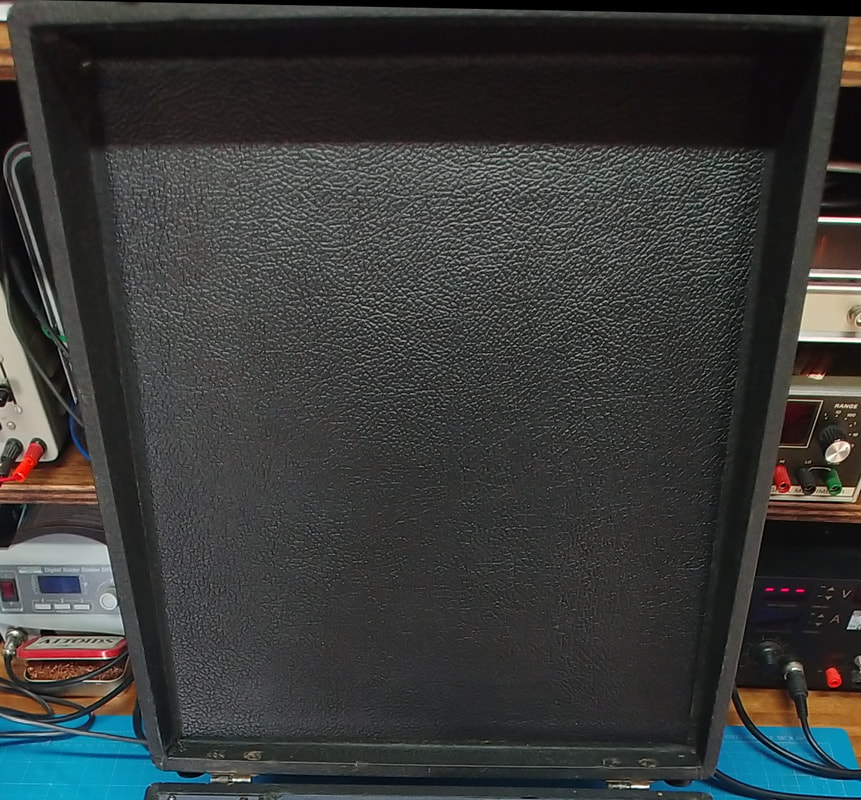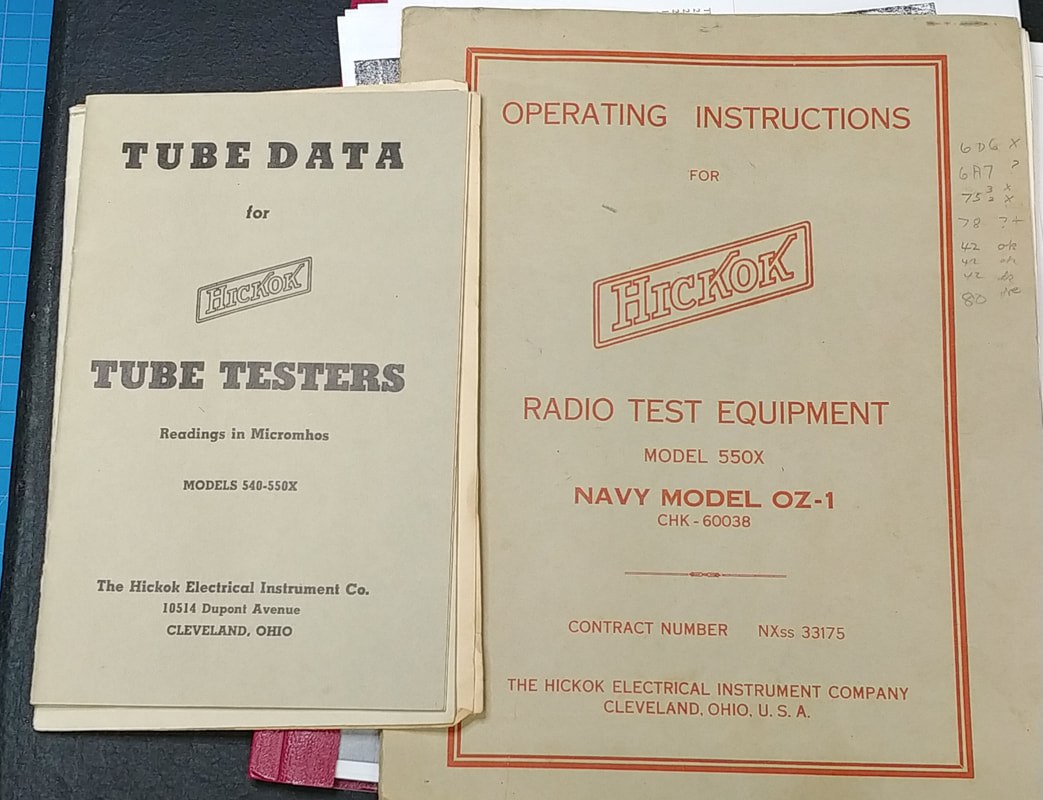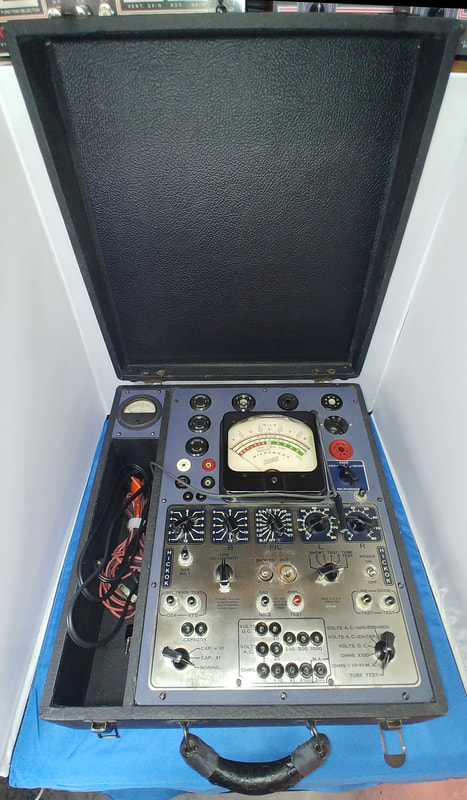Hickok OZ-1 (550X) Tube and Set Tester
The Hickok OZ-1 is a WWII era tester made for the U.S. Navy, and is basically the same as the model 550X. I found it in a flea market 3 or 4 years ago with a busted meter glass. Fortunately the meter movement wasn't damaged.
|
The tubes under the panel are a 5Y3 vacuum rectifier, an 83 mercury vapor rectifier, and two 6H6 dual diodes used in the set tester section. I installed a solid state replacement for the 83 tube, to lower heat buildup in the cabinet. The solid state 83 uses zener diodes to simulate the voltage drop of the real 83 and works OK. But when using a solid state replacement rectifier it is a good idea to add a fuse inline with the high voltage winding center tap in case a diode ever shorts, which could burn out the transformer winding. A fuse is cheap insurance.
All out of tolerance carbon composition resistors were replaced, and all switch contacts were cleaned. All the wire wound and bobbin resistors checked OK. The calibration was checked and all voltages are in spec. |
|
The top of the cabinet had a large section of the black cloth ripped off (forgot to take a photo). I ordered some Tolex to replace the cloth, but it really wasn't a great match. Then I realized I already had a matching piece of cloth just the right size, on the inside of the lid! So I stripped the cloth from inside and reglued it to the top (the dried glue on the right is from someone else's attempt at a repair). I only had to trim a little from one end of the cloth. A perfect match.
|
|
The tester still has its original manual and tube charts, which is nice. The serial number inside the OZ-1 manual matches this set.
I tested some tubes, both good and bad, and compared the Gm results to my military TV-3 tester, which also uses a Hickok circuit. On the OZ-1 tube test results can be read as Gm or on an English reading Replace-Good scale. Setting the L and R pots to the values in the tube charts gives the result on the English scale. To test Gm using the micromho scales the L pot is set to 60 (marked Gm) for all micromho readings, instead of using the "English Reading" L value from the tube chart. The R pot is set up as normal. I found that setting the L pot at Gm gives accurate results on all three scales. |
The micromhos column of the tube chart is only used for the Gm measurements. I could not find anywhere in the OZ-1 manual where it specifically stated whether the Gm data in the charts are a minimum, or average, or what. However, in the Hickok 510x and 530 manuals it states that this reading is minus 20% of the manufacturer's Gm specification for an amplifier tube, and minus 25% for power tubes. The Gm for a 6F6 in my tube manual is stated as 2600, and 2000 listed in the OZ-1 chart is 20% lesss than that. And I did find in the model 600 tube data, where it also lists a Gm of 2000 for a 6F6, that the Gm data in the chart is the average Gm for the tube type.
My TV-3 chart gives the minimum Gm for a 6F6 as 1260, about 48% of 2600. As a test to compare results I measured the 6F6 tube on four testers.
- on my U-Test-Em drug store tester, which is an emission tester, I got a reading of 90%.
- on my Precision Tube Master 10-12 it read 84%.
- testing the 6F6 on my TV-3 gave a Gm result just under 2000 μmhos.
- last of all I tested it on the OZ-1. The controls were set to the values listed for the 6F6, which in this case just happens to set the L pot to 60, so the Replace/Good test also gives the Gm reading as well (that's why I chose a 6F6). The tube tests well in the Green zone on the English scale, and the Gm measures just under 2000 μmhos, which matches the TV-3 result.
My TV-3 chart gives the minimum Gm for a 6F6 as 1260, about 48% of 2600. As a test to compare results I measured the 6F6 tube on four testers.
- on my U-Test-Em drug store tester, which is an emission tester, I got a reading of 90%.
- on my Precision Tube Master 10-12 it read 84%.
- testing the 6F6 on my TV-3 gave a Gm result just under 2000 μmhos.
- last of all I tested it on the OZ-1. The controls were set to the values listed for the 6F6, which in this case just happens to set the L pot to 60, so the Replace/Good test also gives the Gm reading as well (that's why I chose a 6F6). The tube tests well in the Green zone on the English scale, and the Gm measures just under 2000 μmhos, which matches the TV-3 result.
So all four testers gave a similar good result for the test 6F6, but it might be a good idea to keep a copy of my TV-3 data with the OZ-1 manual just as a reference for minimum Gm values.
Page created 3/29/2021
Last edited 11/28/2021
Last edited 11/28/2021

